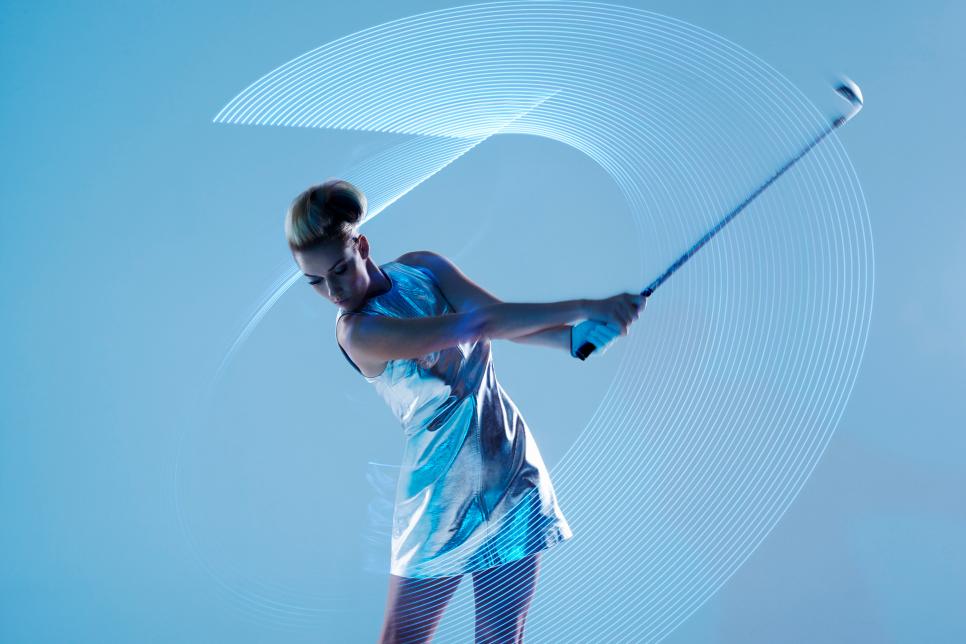One hundred years ago, Dr. Albert Einstein announced his general theory of relativity. Space-time bends and sags, and along this rumpled surface called the fabric of the universe, gravity sends spherical objects on crazy curved paths around black holes—not wholly unlike the greens at Oakmont. The Nobel Prize-winning physicist wasn't much of a golfer, but his Princeton buddies did once drag him to Springdale Golf Club for a lesson. Frustrated, Einstein threw four balls in the air and commanded his instructor to catch. Then, in that intimidating German accent, he implored, "Young man, when I throw you one ball, you catch it. However, when I throw you four balls, you catch nothing! So when you teach, make only one point at a time!"
One point we needn't make is that Paige Spiranac is a whole lot better looking than Albert Einstein. She is the figurehead of our package on golf's futurists, because in her own way, the social-media-savvy "insta-star" has the potential to make a huge impact. What golf might look like 100 years from now is uncertain, but we do know it's the people with the bravery to challenge traditions who will shape it.
Inside are eight more individuals you've perhaps never heard of, but whose work could change the game you love beyond recognition. For the better, we think.
– Edited By Max Adler

PAIGE SPIRANAC / 23
Changing Paths To Stardom
Just over a year ago, the women's golf team at San Diego State posted a trick-shot video on YouTube—ball down skirt, ball down shirt—and the video, so far, has been viewed nearly 2½ million times. Last July, one of the players, Paige Spiranac, won a statewide tournament in Colorado, where she grew up, and a week later the headline on a post on totalfratmove.com announced, "The Whole World Is About To Fall In Love With Paige Renee, This Smokeshow Golfer From SDSU." She woke up one morning to find that she had more than 50,000 followers on Instagram.
"I didn't take it so well, right away," she says. "I was crying a lot in my room, because I didn't know what was going on, and I was freaking out." She now has 650,000 followers and has (mostly) stopped freaking out. All by herself, she has made golf seem at least slightly interesting to a significant number of people who never used to think about it at all. She has also, indirectly, made the strongest conceivable case for relaxing golf-course dress codes for women.
The vast majority of Spiranac's fans are males between 15 and 30-something, and—judging by the nature of their comments on various websites—it's possible that her last name is the longest word they know how to spell. Nevertheless, her sudden celebrity has been useful. "Golf has always been my No. 1 priority," she says. "I wanted to play on the LPGA Tour, but financially I didn't think I could swing it."
She can now afford to try, thanks to an endorsement deal from Callaway. Last December, she played in the Ladies European Tour's Dubai Ladies Masters on a sponsor's invitation, and, although critics complained that she embarrassed herself, she was actually impressive, because she shot two rounds in the 70s despite being subjected to a level of media pressure that maybe only Michelle Wie can appreciate.
Spiranac now hopes to play her way onto the tour, by way of Q school, ideally within two years. Her addiction to the range and the gym shows the necessary work ethic. If she succeeds, she'll have earned it. And, if she doesn't, she'll find another way to make a mark—maybe by working with juniors, something she has enjoyed. She loves golf, and she's just 23. She's going to be around for a while. —David Owen
Watch a behind-the-scenes video with Paige Spiranac:
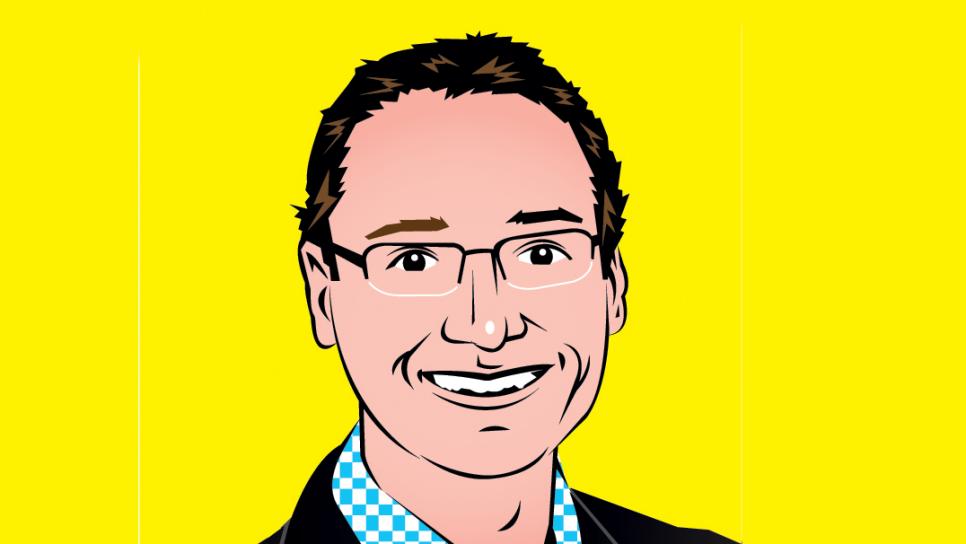
KRIS HART / 3
Minding Millennials
Golf has tons of admirable initiatives to introduce newbies to the game. Fewer are those whose focus is to prevent quitters.
Kris Hart thinks a lot of them are college kids. Not the handful of elites on the varsity roster, but all the rest who, after books and beer, have only so much money to continue a recreational interest.
Hart was almost another golf casualty. He loved the game, but in his senior year at Bryant University in Rhode Island, the uncertain future beyond the cozy womb of academia looming, he quit the team. He needed to study to get his financial license, and going to the golf course five days a week felt excessive. He didn't want to stop entirely, but for the first time in his life he tasted what it was like to pay green fees. He passed the Series 7 exam and landed a job at Morgan Stanley. The lad from East Longmeadow, Mass., was confronted by the various horrors that attend public weekend golf in urban areas.
A spark of an idea, followed by a brash move: Hart quit his job and founded CollegeGolfPass, which successfully negotiated with Boston-area golf courses to offer discounts to the city's roughly 250,000 college students.
In 2013, CollegeGolfPass merged with the National Collegiate Club Golf Association, which had 40 teams. Now that figure is 452. By introducing slick team-management and scoring software, as well as counseling club captains on details like how to navigate university bureaucracy to unlock funding, Hart made mildly organized golf cheaper and easier for a lot of people.
"It might take only a week to get a club team up and running, though sometimes club sports directors are motivated to limit how much they have to oversee," Hart says.
With guidance from Hart's organization, Olivia de Fouchier started the women's club team at Wake Forest. "We use every outlet to recruit, from social media to posters," de Fouchier says. The club used to charge dues, but is now entirely university-funded. Handicaps range from 2 to 20, and there's one mandatory practice a week.
Hart's other mission is to stay engaged with golfers after they graduate. He has rebranded his seven-person, Boston-based operation as Nextgengolf, which also runs events exclusively for young people under a program called City Tour. As with collegians, Nextgen empowers gung-ho local coordinators to host one-day tournaments. There are no handicaps, with scramble and better-ball divisions, and a national championship.
"I don't love the term 'governing body,' " Hart says, "but essentially we envision being the governing body for 18-34-year-old golf." —Max Adler

JIHYUN MOON / 38
Making Grass Glow
Our best attempts for golf at night— glow-in-the-dark balls and stadium lighting—are a mix of disappointing and unsustainable. The latter works for the occasional made-for-TV event or par-3 course, but when scientists are concerned the 24-hour flood from gas stations is disrupting ecosystems, it's tough for golfers to justify stretching the power lines much farther.
But what if courses glowed? What if the genetic material of the grass and trees was spliced with that of naturally bioluminescent organisms, like jellyfish and marine plankton? Dr. Jihyun Moon, the chief scientist at the San Francisco biotech firm Glowing Plant, is working on it.
Actually, she's more intent on creating trees that could replace city street lamps, but she allows that glowing turf for sports is another "fun idea." Her husband's a big golfer.
Glowing Plant raised $500,000 on Kickstarter and is trying to deliver on its initial pitch to investors: a plant bright enough to be a child's night light. So far Moon can make a tobacco plant—the fruit fly of vegetative species—dimly visible in a dark room, but also has projects like the glowing rose. "The prospect of seasonal items, like Christmas trees and stuff for Halloween, excites me," Moon says. Products like these, she believes, would do much to assuage the fear and misconceptions surrounding genetically modified organisms. "I have a vision of our company educating people and changing the acceptance of GMOs."
The cost of synthesizing DNA on the Internet—drag and drop—and having your design shipped to you in the mail, is plummeting. Because one colleague works part-time, Moon says, "We are 2½ scientists and a business person." That's Antony Evans, whose TED talk includes a clip of the glowing jungle paradise depicted in the movie "Avatar." In a British accent, Evans speaks eloquently of a "post-scarcity society" in which synthetic biology has solved all our food and fuel concerns.
"Putting domesticated biotechnology in the hands of amateurs and teenagers will result in a diversity of creatures," Evans says. "By democratizing these tools we can see the type of creativity we saw in the computer industry."
He didn't mention alleviating tee-time stress, but worry not. Back at the lab, Moon knows it's an issue. —Max Adler

LDRIC / 4
Presenting Perfection
You can marvel at the circuitry that makes the LDRIC swing robot generate 130 miles per hour of clubhead speed. You can be intrigued at how this collection of servomotors and computer-controlled drive systems, with just a few keystrokes, can perfectly imitate your over-the-top slice or Rory McIlroy's power draw.
You can even be amazed at how this portable machine is already rolling down fairways and beating tour pros just as IBM's Watson schooled Ken Jennings on "Jeopardy!" LDRIC can even get down into bunkers, not that he often needs to.
But if you really want to understand how the most influential golfer of the next 25 years might not be human, all you have to do is watch kids at a First Tee clinic squeal with delight as LDRIC mocks his front man, Gene Parente. The robot's voice and the mannerisms might be more Johnny Five than Hal 9000, but this machine can work a crowd.
"Golf is an incredibly difficult game, and to see it done well and consistently is something that is alluring to the average player, the better player and the beginning player," says Parente, the founder of Golf Laboratories, golf's leading independent robot-testing source.
LDRIC, the product of Parente and design partner Dynes Unlimited Products, made an ace at the Phoenix Open, and a prototype appeared on Japanese television and outplayed two tour players in a skills competition. Parente foresees a unique combination of entertainment and educational appearances. The device could become a kind of electronic Johnny Apple-seed, growing the game in a world where the age-old battle of man versus machine becomes a reality.
At the end of the day, LDRIC's performance is eerily similar to that of another golfer goofing his way through a clinic and amazing attendees with power, speed and accuracy. That guy was a young Tiger Woods. A quarter-century later, it's his robotic namesake that might be changing the game. —Mike Stachura
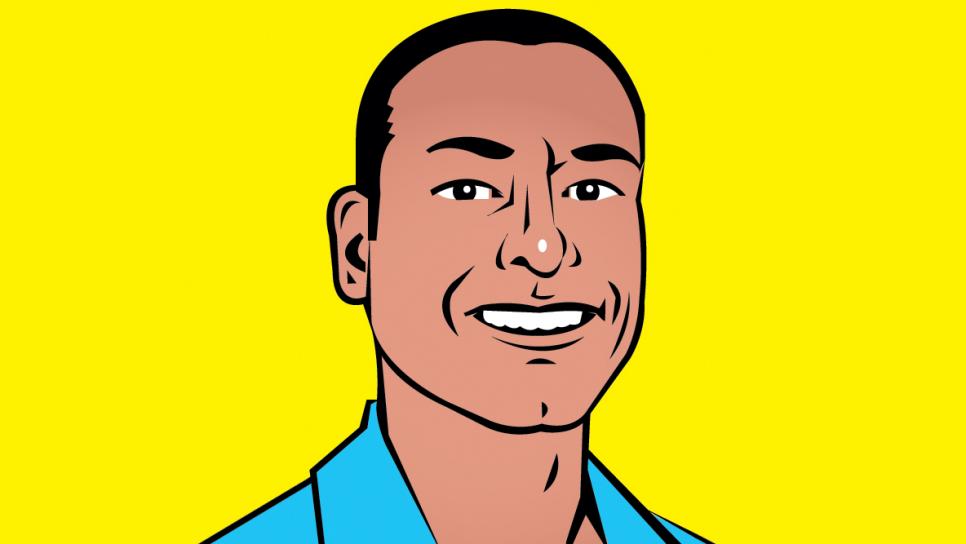
HENRY BOULTON / 39
Measuring Mental Toughness
Ask a PGA Tour player how much he can bench-press, and you'll likely get a fast, specific answer. But how do you quantify "soft" skills like mental performance and emotional resilience—which are arguably more important to winning? A handful of players are doing this with the technology in the FocusBand—a wearable device that tracks emotional state and stress response through electroencephalography readings. It might sound like science fiction, but Jason Day used one of the devices to build his distinctive eye-fluttering pre-shot routine—which he credits for moving him into a calm, hyper-focused state.
Australian electronics engineer Henry Boulton developed the FocusBand with his father, Graham, in 2009. "We were coaching some guys on the Australian and Japanese tours, and they had all the technique, fitness and diet, but they'd get to a tournament and fall apart. We started looking for products that would address the mental side, and we couldn't find one. So we built our own."
Three sensors inside a bioprene headband measure brain activity and link the data to a smartphone app. By following the app's exercises and responding to visual cues and sounds, the user can learn to change the reading on the app's brain avatar from red (thinking) to green (creative). Boulton calls this green state mushin, Japanese for the "zone" or "no-mindedness."
The ability to measure brainwaves has been around since the 1920s, but interpreting these waves for the average consumer is a new frontier in performance training. The system a user gets with the FocusBand, while basic, offers analysis at the level you'd get with a body-tracking device like Fitbit.
"Once we defined the process, we were able to score the process," says Boulton, who splits his time between Brisbane, Australia, and Aliso Viejo, Calif. "If you can change your scores you can change your results. Once you get those results, you get belief. That's the edge the top players are looking for."
The device costs $600. Users can download apps specific to golf, yoga, baseball or general mental performance. Boulton is testing the newest FocusBand element, GPS Brain Tracka, which will allow users to review their brain state with each shot—showing the lift or hangover that comes with each outcome. Call it a real-time mental scorecard. "Usually, the starting point for training has been technique," Boulton says. "You start with technique, work on fitness and then finish with mind training. We're showing that you should be training the mind first. Get your mind right, and everything will get better together." —Matthew Rudy
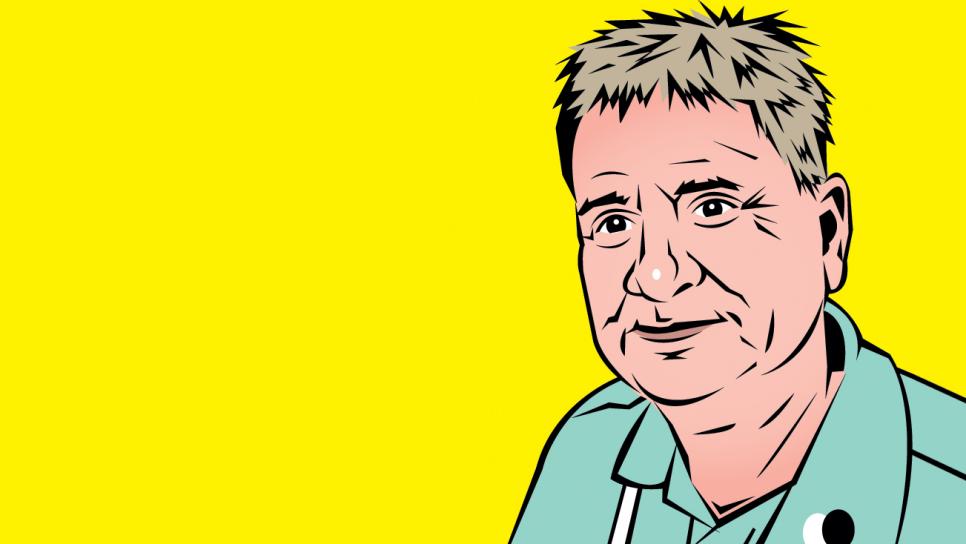
DAVID DOGUET / 65
Improving Lies
If the business of breeding better grass is a turf war, no one is more competitive than David Doguet. His complex in the San Antonio suburbs is called Bladerunner Farms, apropos of its sod-provider origins and sci-fi-like cross-pollination operation.
Doguet (pronounced dough-gay) has made zoysia golf's new super grass. Yes, zoysia, once characterized by quarter-inch-wide blades that provided indestructible hairbrush lies but wouldn't green up until early summer and reverted to tan at first frost. Traditionally, the coarse grass was used only for tees and fairways in transition-zone climates—where the winters were too cold for Bermuda and the summers were too hot for bent. Never was it the ideal choice.
But Doguet's various crossbred strains—finer-bladed, more disease- and insect-resistant, less thirsty—have changed that. His latest creation, L1F zoysia, is a sensation. It has been chosen by Tiger Woods for the tees and green surrounds at his first American course, Bluejack National in Montgomery, Texas. Bill Coore and Ben Crenshaw used it for the tees, fairways and green surrounds at their new Trinity Forest Golf Club in Dallas, a future PGA Tour stop. Gil Hanse planted it at the 2016 Olympics golf course in Brazil. But only the renovated Golf Club of Texas has used L1F on the greens, making the Roy Bechtol design the first all-zoysia course in the United States.
In June, Doguet will roll out M85 zoysia. He calls it the ultimate, a near grain-less strain suitable for fairways yet capable of handling the lowest mowing height any PGA Tour official might prescribe. It keeps its color without fertilization and is salt tolerant, so it'll remain healthy despite poor water quality. Because its blades grow very slowly, Doguet predicts M85 fairways and greens will need mowing just once or twice a week.
Of course, the proof is in the practice, not the test plot. Doguet hopes the first course to try M85 is a low-budget public course, to demonstrate that quality playing surfaces can be achieved even with modest maintenance. If that happens, Douget might have won the war. —Ron Whitten
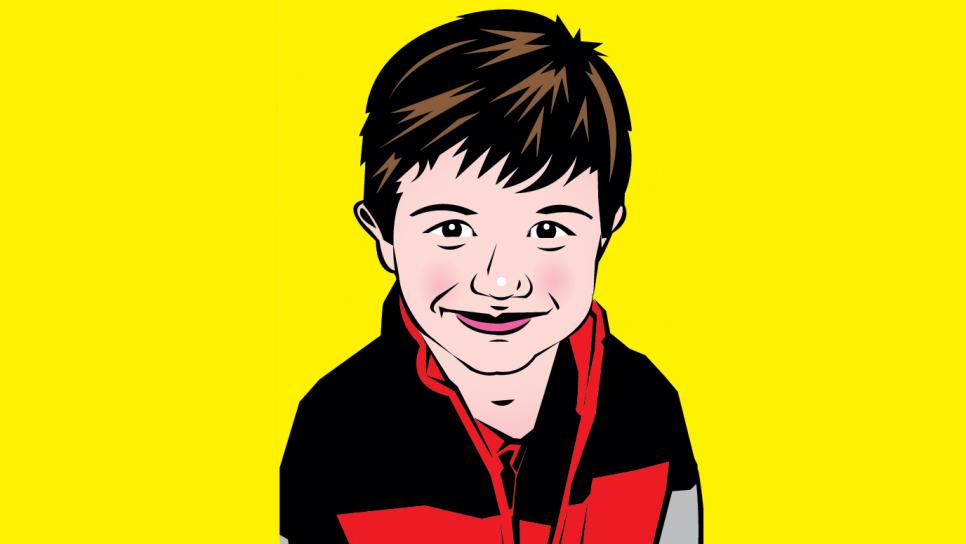
TOMMY MORRISSEY / 5
Ending Handicaps
Tommy Morrissey's parents knew he would be born without a right arm 15 weeks into the pregnancy. By the time he was crawling, he'd changed their minds about what was possible. He has been changing the minds of innumerable strangers since.
The golfer from Palm Beach Gardens, Fla., went on "Ellen" at 3. He captured the audience with a few funny desk-side non sequiturs, then amazed the host by smacking high, straight beauties down an alleyway behind the studio. In the past year, he has appeared on Golf Channel, addressed classrooms and gymnasiums of his peers, conducted clinics as far away as the Indonesian Masters and, most recently, traveled to Germany to film a spot for the hit TV show, "Klein Gegen Groß," which translates to "Big vs. Small."
Tommy calls the base of his right arm "Nemo" after the Disney fish character similarly challenged by a dwarfed flipper. Tommy's imitations of the pre-shot routines and swings of his PGA Tour heroes always draw laughs, and his arsenal of trick shots, like hitting balls from his knees or out of mid-air, are amazing.
"The message is anti-bullying, but it's not a pity party," says Tommy's dad, Joe. "He wants to show that there's really no such thing as a handicap and that everyone has their version of awesome. ... Tommy is about as good an interview as your typical 5-year-old, but when that tee goes in the ground, he knows what to do."
Up next for Tommy is a tour to inspire wounded veterans. He'll visit Fort Belvoir, Walter Reed, Andrews Air Force Base and, oh, yeah, the White House. —Max Adler

DAVID WILLIAMS / 66
Searching For Golf Balls You Can't Lose
Golf courses could save money if the primary rough was mowed less often, but thick grass slows play as golfers search for balls. Courses could save even more money—plus help the environment—if they had more unmaintained areas of tall vegetation that needed no irrigation or chemical treatment. But such spots would inevitably eat up more wild misses, slowing pace of play even further.
The solution, according to British golf architect David Williams, is to amend the Rules of Golf to allow the use of a ball-finder device. Let a golfer beam in on his hidden ball, play it (or drop with penalty if unplayable) and move on. Because the use of distance-measuring devices in competition is permissible under Local Rule, Williams says allowing a ball finder for everyday play is well within the spirit of the game. Like a range finder, a ball finder would simply replace a caddie function.
Just one device is on the market, in Europe, and only for balls containing an electronic chip. The only golf ball containing a chip in the United States is in limited production for use at Topgolf practice facilities.
Doesn't matter, Williams says. If the rules allowed it, inventors would be motivated to perfect hand-held devices by incorporating all sorts of technology. Could be as simple as magnetic printing on the cover, or as complicated as zeroing in on objects with the volumetric mass density of a golf ball.
The rules of golf are revised every four years, and the next revisions will be issued in 2020. Williams is campaigning to have the rules committees of the USGA and R&A give serious consideration to his proposal before then. —Ron Whitten
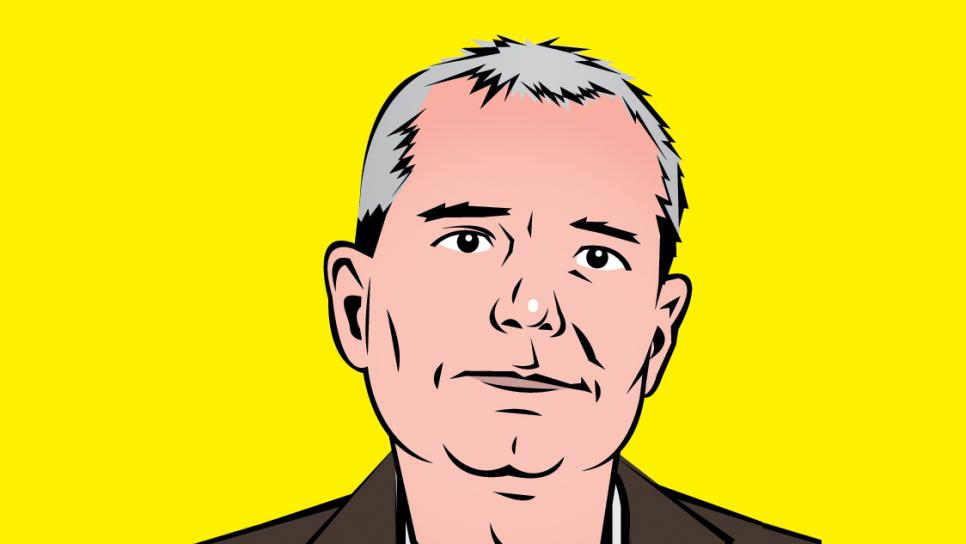
DAVE COLE
Replicating Reality
As good as high-definition broadcasting has become, watching a golf tournament on television is still a different experience than standing a few feet from Rory McIlroy in real life. David Cole wants to blur that distinction.
Cole is the technical wizard behind NextVR—a California company that has begun producing virtual-reality programming for a growing population of premium smartphone users. Cole's cameras have brought viewers inside events as disparate as the 2015 U.S. Open at Chambers Bay, the Democratic presidential primary debates and NASCAR's Daytona 500.
Using arrays of remote-operated Red Dragon cameras, NextVR lets viewers eavesdrop in places where cameramen might otherwise disturb the action. To see the footage, you need a compatible smartphone—mostly Samsung devices—and a $100 headset to hold the screen in front of your eyes.
"The cameras build a replica of what is around them, and we project a replica of that onto the walls of the viewing area," says Cole, who has co-authored 29 virtual-reality and adaptive-computer-learning patents. "We 'detach' the viewer's head and put it where the cameras are. In golf, it's as if the viewer is standing on the tee with the players."
At Chambers Bay, Cole worked with Fox to broadcast tee shots and putting on several holes, as well as action in the practice area. Viewers could control the different feeds, and real-time scoring updates scrolled across the display. "Iron Man golf viewing," Cole calls it.
This summer, the next wave of flagship Android smartphones will hit the market—most with a new chip that supports virtual reality. Add the launch of new self-contained virtual-reality devices like the Oculus Rift and PlayStation VR, and more than 20 million people will have access to Cole's content by the end of 2016. It's why venture-capital groups and media conglomerates like Comcast and Time Warner have invested more than $30 million in NextVR since last year.
"Manchester United has 650 million fans around the world, and only a tiny fraction will ever get to Old Trafford to see a game," Cole says. "In golf, I can think of some major events you'd want to give people the experience of attending, the reverence of being there."
Amen Corner, anyone? —Matthew Rudy

– Edited By Max Adler
